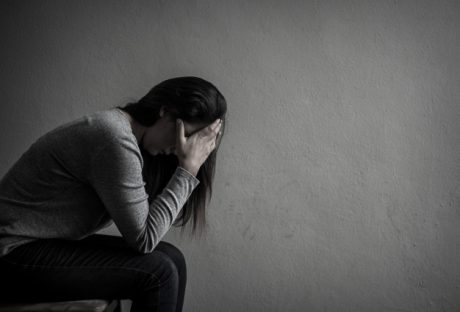Acne affects up to a whopping 50 million Americans every year. That’s already bad news, but the list of skin problems doesn’t end there. There’s also atopic dermatitis, psoriasis, and yes, aging skin.
The good news is, you can prevent or at least minimize your risks for such problems. One of these is through using the best skin care products in the market. Another is through seeking the help of skin care experts.
At the end of the day though, having great skin has a lot to do with your own personal skin care regimen. That, and loading up on foods proven helpful for skin health.
The good news is, Mother Nature has given us access to so many of these foods. We’ve rounded up 11 of the best foods that can give you that younger, healthier skin you’ve always wanted.
1. Avocado:
Great news, since almost all of us love avocados. We love it so much that the average American eats about seven pounds of it a year! But what’s even better aside from its rich and creamy flavor is that it’s loaded with great things for the skin.
Vitamin A — check. Vitamin D — check. Vitamin E-check. All that and more, avocados can give you and your skin. It’s more of a question of what it doesn’t, really.
It’s particularly rich in Vitamin E that helps with hydration and overall skin nutrition. It’s rich in fats and phytonutrients, giving the fruit antioxidant and anti-inflammatory benefits.
Researchers have also found avocado oil to have collagen-increasing properties. Another study even found it to have potent antimicrobial effects! We can go on and on about avocado’s benefits for the skin, but you get the gist.
Plenty more reason to gobble up guacamole!
2. Berries:
Who doesn’t love strawberry or blueberry cheesecake? Here’s another great reason to love these fruits: their skin protecting benefits!
Plus, there are plenty of other choices, all of which are lip-smacking. There are the goji, blackberry, and raspberry variants.
These fruits may be small, but they pack a punch when it comes to dealing with free radicals. They contain loads of antioxidants, helping kill toxic elements that damage cells. They also supply you with a good dose of Vitamin C to boost your skin’s collagen levels.
Note though that the darker their color, the better they are for your health (and your skin).
But helping reduce signs of skin aging (like wrinkles) isn’t berries’ only benefit. Their ellagic acid content may also have sun-damage protecting features. A separate study even found they may even boost heart health and brain power!
Either way, all those are some berry awesome news, don’t you think?
3. Broccoli:
For the longest time, Broccoli has been a superpower food. After all, its many health benefits are all scientifically-proven. It can help with detoxification, deal with inflammations, and boost Vitamin D levels.
What makes it particularly amazing for the skin is its glucoraphanin content. This phytochemical helps repair skin damage and improve overall skin health. It also helps prevent UV damage that can wreak havoc to your skin.
When the body converts this into sulforaphane, it can even act as a preventive agent for cancers! That includes skin cancer, as well as breast, colon, and stomach cancers among many others.
So, do what your mom told you. Eat your vegetables, particularly these amazing green florets. Speaking of which, here are a few tips to have your kids eat veggies too.
4. Dark Chocolate:
Need more reason to indulge in dark chocolate? Well, how about scientific evidence that they’re great for your skin?
In one study, participants consumed high flavanol cocoa for six to 12 weeks. They reported an increase in their skin’s moisturization level. They also said their skin felt thicker, smoother, and all in all, healthier.
A separate study also supports other findings on dark cocoa’s skin protective properties. The keyword here is dark, so make sure you know your chocolates. It’s best you stick to the dark kind that contains at least 70% cocoa.
5. Fatty Fish:
What if we told you there’s a way on how to have better skin while also boosting heart health? You can also add lower blood pressure to that list.
What we’re referring to is loading up on fatty fish! There’s the rich, buttery, and great-tasting salmon for starters. For meal variation, you can go with herring and mackerel too.
Either way, these fishes contain high levels of omega-3 fatty acids. They may sound quite unhealthy, but it’s exactly the opposite.
For instance, you need these fatty acids for the health of your skin. They’re especially helpful for keeping your skin hydrated and supple. If you don’t eat enough of these fats, your skin may end up becoming dry and scaly.
Also, omega-3 fats can help with acne management. These fatty acids help minimize inflammation after all. As such, they make a great addition to the list of must-have ingredients for the best diet for acne.
Pro Tip: If you have serious breakouts, consider professional skin care services. Check out MyBotoxLA for services such as facials and skin care treatments.
6. Green Tea:
Knowing about the many skin benefits of green tea is one way to drink less soda. Unlike soda that’s linked to so many health conditions, green tea is far healthier.
For starters, this tea boasts high amounts of catechins. It’s one of the plant’s primary health-beneficial compounds. Studies like this have shown them to have powerful antioxidant functions.
As you know by now, antioxidants protect your skin against damage from UV exposure. The sun’s UV rays are notorious for premature skin aging, so drinking green tea may help prevent that.
Here’s another reason: It can help moisturize your skin! In a three-month study, women who drank green tea reported skin health improvements. These include better skin hydration, less roughness, and greater elasticity.
A friendly reminder though: You may want to think twice about splashing some milk in your tea. Granted, further studies have yet to answer the question, “Is dairy bad for your skin?”. But existing research found that dairy products may further irritate acne.
7. Kale:
Kale is much like broccoli, although it’s a relatively new addition to superfoods. It delivers pretty much the same benefits, including helping the body’s collagen synthesis. That’s many thanks to the high Vitamin C content of the vegetable.
Plus, a cup of this contains the same amount of absorbable calcium you’ll get with one cup of cow milk. That makes it a much better source for calcium, especially if you’re worried about dairy and acne.
8. Nuts:
We’re not saying you should go nuts every time you eat walnuts or almonds. Even only a handful of them can already bring benefits from their high Vitamin E content. They also contain selenium, another powerful antioxidant.
All these, plus their zinc and omega-3 fatty content, make nuts a great skin health booster. These nutrients help keep your skin taut and tight by raising collagen levels. Plus, they’re great sources of fiber, helping improve bowel movement.
9. Tofu:
Have you ever wondered how women from Southeast Asia (like the Japanese), have amazing skin? Well, it may have something to do with their love of tofu, or soy, in general.
First off, tofu’s rich in calcium, Vitamin E, and protein (for skin cell production and regeneration). It also contains soy isoflavones, which have shown to increase collagen fibers. Another study also reported that isoflavones may reduce skin wrinkling and discoloration.
So, consider adding tofu to your diet. It may give you back that youthful, glowing skin you’ve had in your younger years.
10. Tomatoes:
Who doesn’t want clearer skin? Almost all, if not everyone wants glowing, smooth skin, and eating more tomatoes may help.
One reason is that of these red fruits’ lycopene content. You may have heard of this compound’s potential cancer-fighting properties. But lycopene has other skin benefits too, thanks to its antioxidant properties.
That includes boosting the skin’s protection against the sun’s damaging UV rays. Furthermore, it helps minimize damage due to UV exposure. Researchers have also found tomatoes to help with skin cell replacement.
11. Watercress:
Watercress’ leaves may be smaller than your usual greens, but it’s packed with skin benefits. It’s vitamin-rich, starting with a high Vitamin A content. It also contains three types of Vitamin B, as well as Vitamins C, E, and K.
Those vitamins alone make it a great source for antioxidants that help protect the skin. Researchers also say that watercress consumption may even reduce cancer risks.
Combining a Healthy Diet with Proper Skin Care for Great Skin:
These are only 11 of the superfoods you should stock up on to have great skin. But, they’re some of the best ones that you should incorporate in your healthy meals ASAP.
Don’t forget that personal hygiene and proper skin care also affect skin health! So, be sure you combine all three for that glorious looking skin. Of course, it also doesn’t hurt to visit skin care specialists from time to time.
Want more insider info on health, fitness, and food? Then make sure you pay our blog’s Lifestyle section a visit!
Read Also:






















